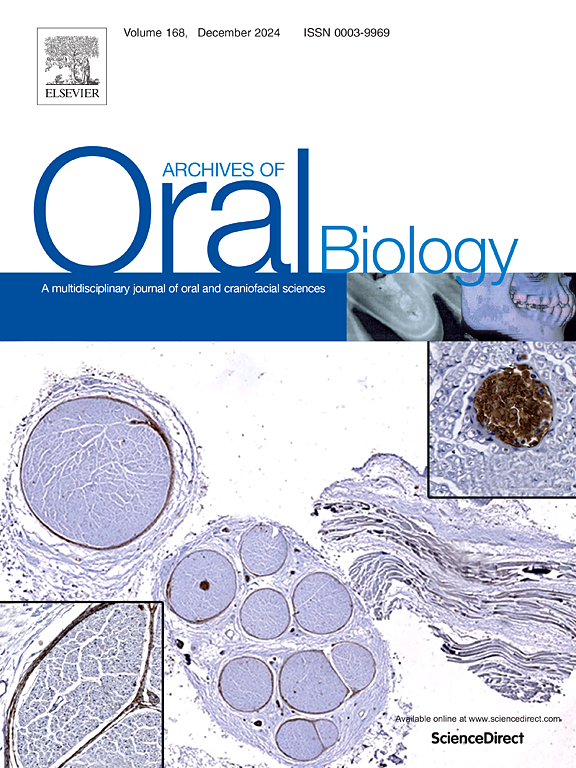考古来源的永久上颌门牙融合:中世纪晚期克罗地亚一例报告
IF 2.1
4区 医学
Q2 DENTISTRY, ORAL SURGERY & MEDICINE
引用次数: 0
摘要
目的研究克罗地亚中世纪晚期Sisak镇的一名中年男性上颌永久中外侧门牙融合的病例。“双牙”是指由于先天、遗传、获得性和/或特发性因素导致两颗相邻牙齿结合而导致的发育异常。它通常发生在三种不同的品种:接合,再生和融合。虽然在最近的人群中有许多关于这种疾病的报道,但在考古背景下类似的例子仍然很少,而且在大多数情况下,记录在初级牙列中。我们结合形态学(宏观)和最先进的放射学分析(显微ct扫描)。结果与形态正常且完全分离的左上颌切牙相比,冠状牙和根状牙髓融合较好。融合的RI1和RI2有一个单一的冠,沿着根的舌侧有一个轻微的沟,在根的颊侧也可以看到。在牙冠舌侧可见两个小突起(齿状结核)。显微ct扫描证实融合后的牙齿只有一个牙髓室和根管。结论本病例是欧洲首次发现的上颌门牙融合的考古标本,也是全球范围内罕见的永久性牙齿融合病例之一。本文章由计算机程序翻译,如有差异,请以英文原文为准。
Fusion of permanent maxillary incisors of archaeological origin: A case report from late medieval Croatia
Objective
The study aims to investigate a case of fusion of the permanent central and lateral right maxillary incisors observed in a middle-aged male from the late medieval town of Sisak in Croatia.
Design
“Double teeth” is a term for a developmental anomaly caused by congenital, inherited, acquired and/or idiopathic factors resulting in the union of two adjacent teeth. It usually occurs in three different varieties: concrescence, gemination and fusion. Although there are many reports of such disorders in recent populations, similar examples in archaeological contexts are still rare and, in most cases, recorded in primary dentition. We employed a combination of morphological (macroscopic) and state-of-the-art radiographic analysis (micro-CT scanning).
Results
The teeth in question are fused in both coronal and radicular pulp parts, indicating a complete fusion in comparison to the left maxillary incisors that have a normal morphology and are completely separated. The fused RI1 and RI2 have a single crown with a slight groove running along the lingual side of the root which is also visible on the buccal side of the root. Two small protrusions (tuberculum dentale) are visible on the lingual side of the crown. Micro-CT scans confirmed that the fused teeth have a single pulp chamber and root canal.
Conclusions
The presented case is unique as it is the first known archaeological specimen of permanent maxillary incisors fusion from Europe and one of the very few known cases of the fusion of permanent teeth from archaeological contexts globally.
求助全文
通过发布文献求助,成功后即可免费获取论文全文。
去求助
来源期刊

Archives of oral biology
医学-牙科与口腔外科
CiteScore
5.10
自引率
3.30%
发文量
177
审稿时长
26 days
期刊介绍:
Archives of Oral Biology is an international journal which aims to publish papers of the highest scientific quality in the oral and craniofacial sciences. The journal is particularly interested in research which advances knowledge in the mechanisms of craniofacial development and disease, including:
Cell and molecular biology
Molecular genetics
Immunology
Pathogenesis
Cellular microbiology
Embryology
Syndromology
Forensic dentistry
 求助内容:
求助内容: 应助结果提醒方式:
应助结果提醒方式:


